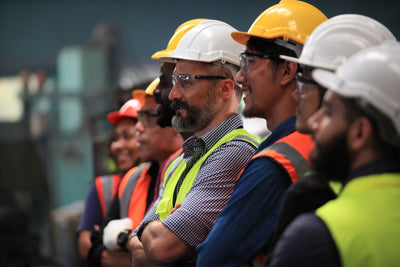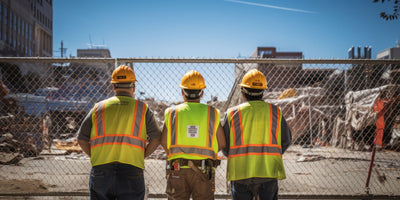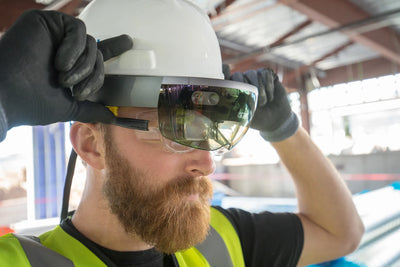Construction sites are dynamic environments characterized by heavy machinery, bustling activity, and numerous potential hazards. Amidst the chaos, maintaining safety is paramount to protect workers, visitors, and the public. One of the most effective tools for promoting safety on construction sites is construction safety signage. In this comprehensive guide, we'll delve into the importance of construction safety signage, its role in preventing accidents, and best practices for implementation.
Understanding the Importance of Construction Safety Signage
-
Risk Awareness: Construction safety signage serves as a visual reminder of potential hazards present on-site. From warning signs highlighting slippery surfaces to mandatory signs indicating the need for personal protective equipment (PPE), these signs keep workers and visitors informed and alert to potential dangers.
-
Accident Prevention: By providing clear and concise information about safety protocols and hazards, construction safety signage helps prevent accidents and injuries. For example, signage indicating the location of fire extinguishers or emergency exits can be crucial in times of crisis, allowing for swift and effective response.
-
Legal Compliance: Regulatory bodies often mandate the use of specific safety signage on construction sites. Compliance with these regulations not only ensures the safety of personnel but also mitigates the risk of legal repercussions. Failure to adhere to signage requirements can result in fines, penalties, and even legal action against the construction company.
-
Promoting Safety Culture: Visible and well-maintained safety signage sends a powerful message about the importance of safety within the organization. It fosters a culture where safety is prioritized and valued by all stakeholders, from management to frontline workers. This culture of safety encourages proactive behavior and reduces the likelihood of accidents.
Best Practices for Implementing Construction Safety Signage
-
Assessment and Planning: Conduct a thorough risk assessment of the construction site to identify potential hazards and determine the appropriate safety signage needed. Develop a signage plan that addresses the specific needs of the site, considering factors such as layout, traffic flow, and work activities.
-
Clear and Consistent Messaging: Ensure that safety signage is clear, concise, and easily understood by all personnel. Utilize universally recognized symbols and colors to convey messages effectively, regardless of language or literacy level. Consistency in signage placement and design enhances recognition and comprehension.
-
Regular Inspection and Maintenance: Periodically inspect safety signage to ensure visibility, legibility, and adherence to regulatory standards. Replace damaged or faded signs promptly to maintain effectiveness. Regular maintenance ensures that signage remains an integral part of the safety infrastructure on-site.
-
Employee Training and Awareness: Educate employees on the meanings and importance of construction safety signage through comprehensive training programs. Emphasize the role of signage in hazard identification, accident prevention, and emergency response. Encourage active participation and ongoing dialogue to reinforce awareness.
-
Adaptation to Changing Conditions: Continuously reassess signage needs as construction progresses and site conditions evolve. Update signage accordingly to reflect changes in hazards, work activities, or regulatory requirements. Flexibility and adaptability are key to ensuring the relevance and effectiveness of safety signage over time.
Conclusion
Construction safety signage plays a vital role in promoting a safe and secure working environment on construction sites. By raising awareness of potential hazards, preventing accidents, ensuring legal compliance, and fostering a culture of safety, signage contributes to the overall well-being of personnel and the success of construction projects. By following best practices for implementation and maintenance, construction companies can harness the full potential of safety signage to protect lives, minimize risks, and achieve excellence in safety performance.






